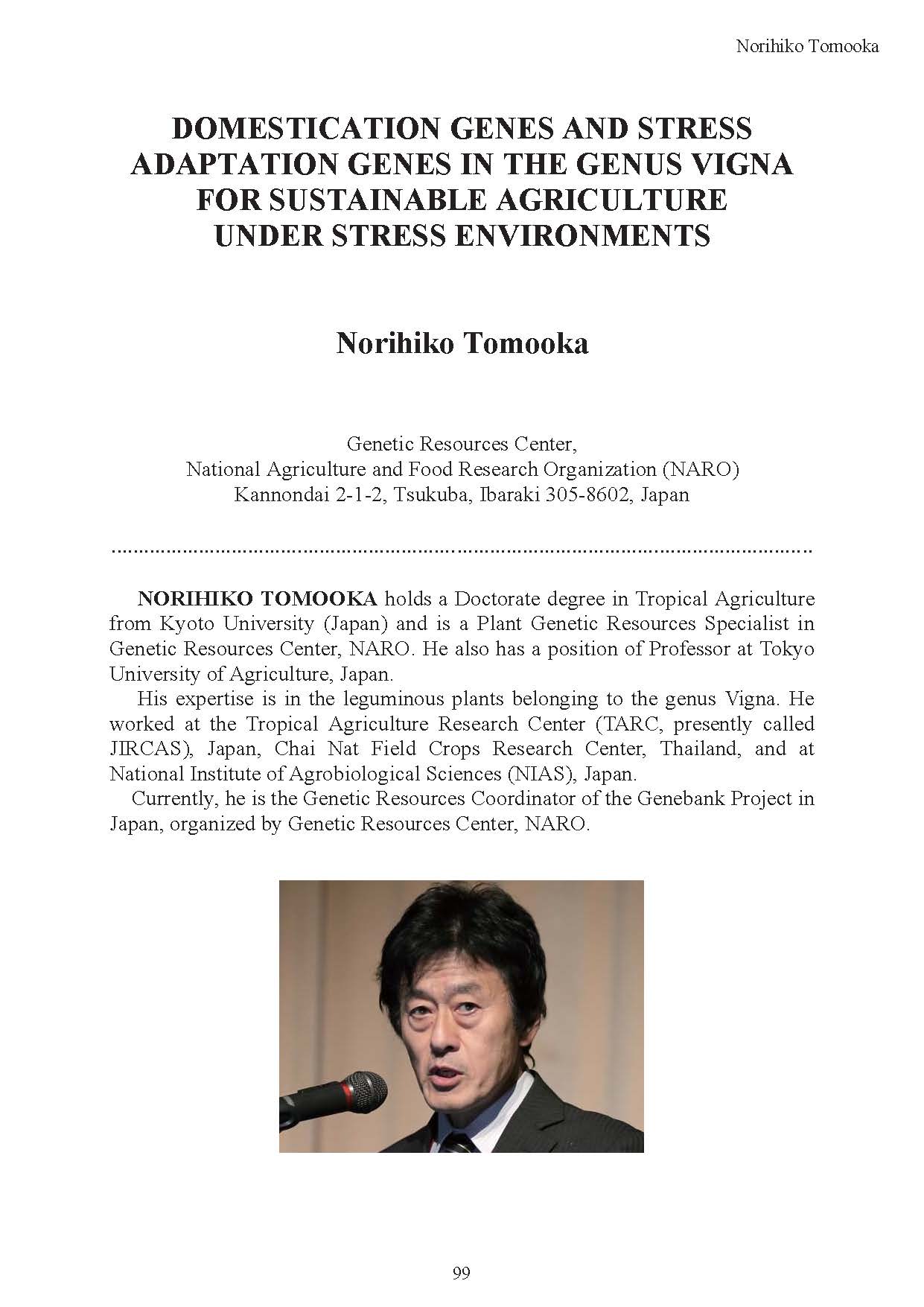Domestication genes and stress adaptation genes in the genus Vigna for sustainable agriculture under stress environments

I propose a novel breeding strategy "Neo-Domestication" for sustainable food production especially under stress environments. It is estimated that the world food production should be doubled before 2050. In the past 50 years, world food production had increased 2.5 - 3 times owing to the yield increase of a few major crops, which is called "Green Revolution". However, this system depended largely on irrigation (water resource), industrial fertilizers and pesticides (both produced by fossil energy) and resource consuming high yielding varieties. Therefore, it is far from sustainable and causes water resource deficit, soil salinization, environmental pollution, etc.
Present agriculture has used 11% of the world land. One approach to increase crop production is to use lands that are currently not suitable for crop production. These include lands with high salinity, high acidity, and high alkalinity, those that are drought prone and those that have water-logged environment. Even among the lands presently used for crop production, about 70% are categorized as problem soils. To achieve stable crop production on various problem soils, new crops that can grow well on these lands are needed. Hence, I propose "Neo-Domestication" of edible wild species already adapted to problem soils. Leguminous plants have an advantage in sustainable agriculture because of their ability of symbiotic N fixation.
As the causative change of the domestication gene is generally a "Loss-of-Function" type, "Neo- Domestication" could be achieved by mutation breeding. Screening process can be facilitated by gene screening using NGS-TILLING, in case a target gene sequence is known. Since 10 wild species had been domesticated to become crops in the genus Vigna, diverse domestication genes could be identified from Vigna crops and be used for NGS-TILLING during "Neo-Domestication". On the other hand, more than 100 wild Vigna species had evolved by adaptation to diverse stressful environments including problem soils. Hence, wild Vigna plants are considered as rich sources of stress adaptation genes. In addition to "Neo-Domestication", these domestication genes and stress adaptation genes could also be used for the breeding of other crops.
| Creator | Norihiko Tomooka |
|---|---|
| Subject |
Genetic Resources Evolution Domestication Adaptation Symbiosis |
| Publisher | Japan International Research Center for Agricultural Sciences |
| Available Online | |
| Issue | 2016 |
| spage | 99 |
| epage | 103 |
